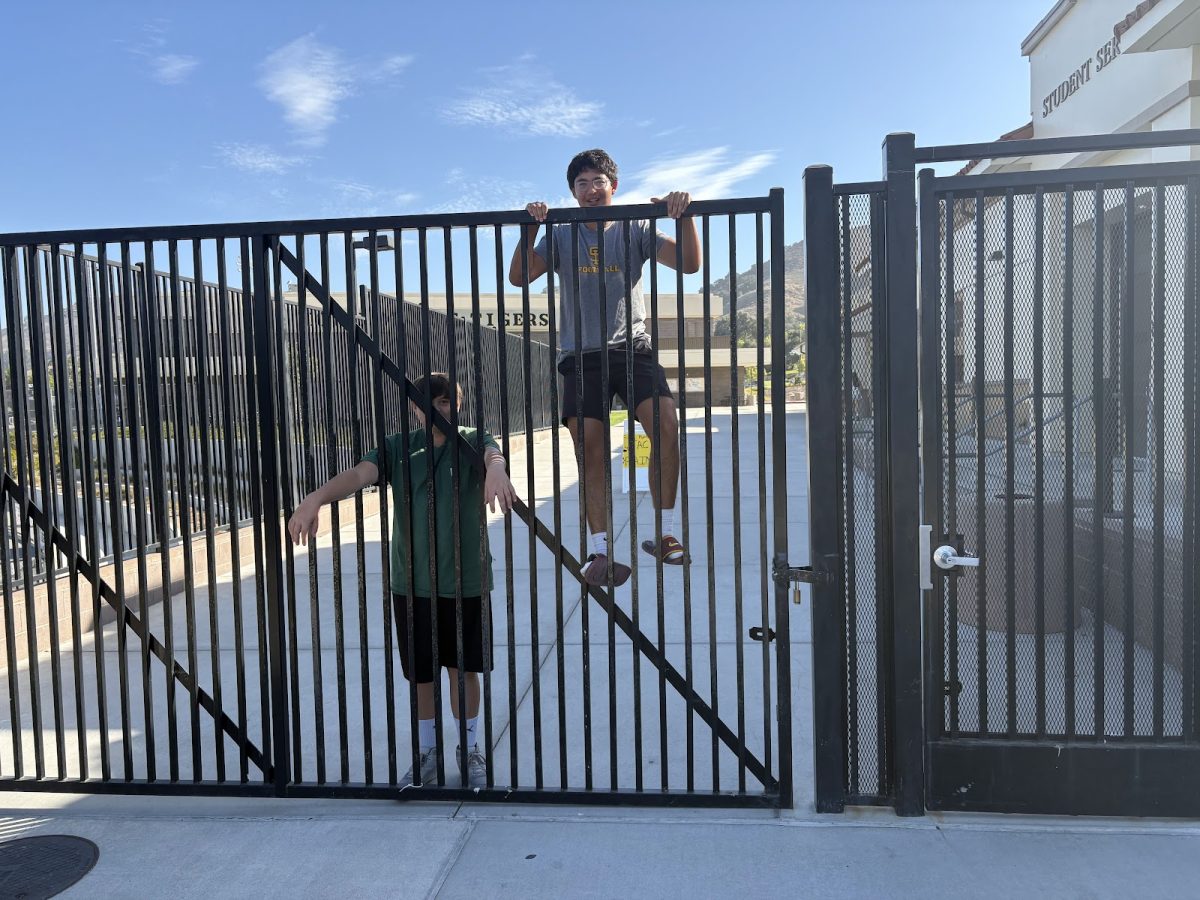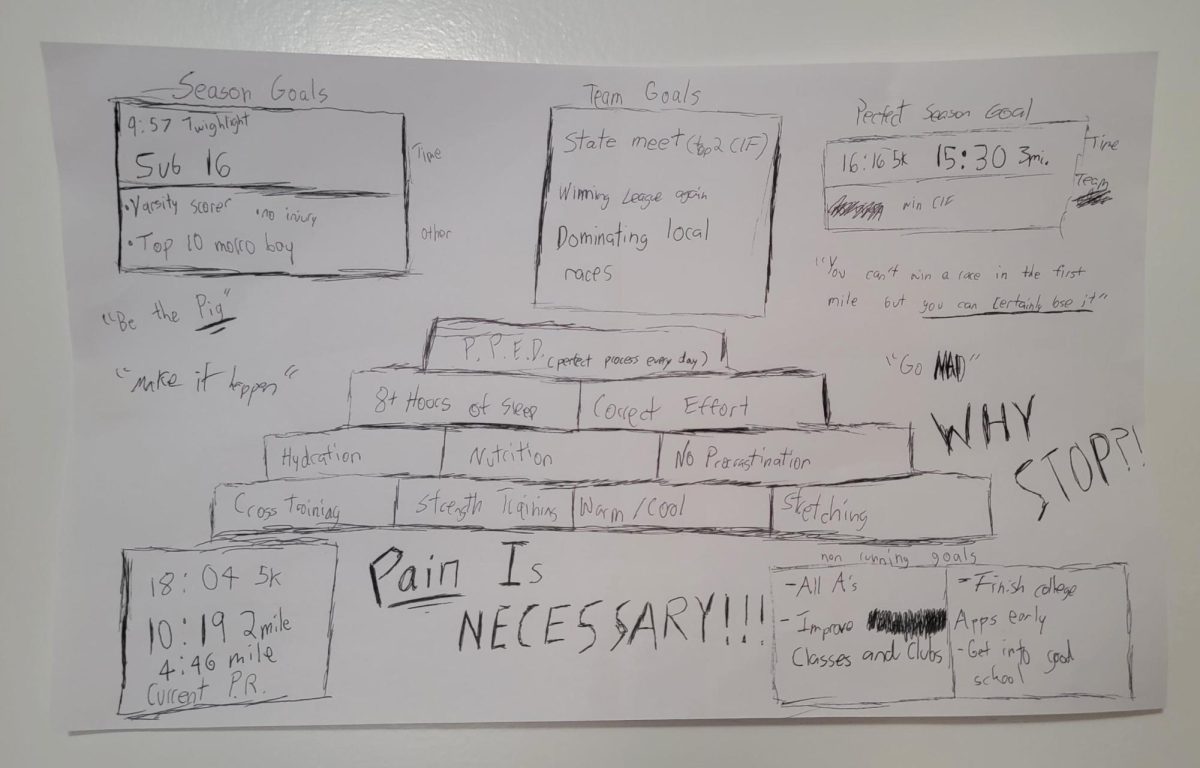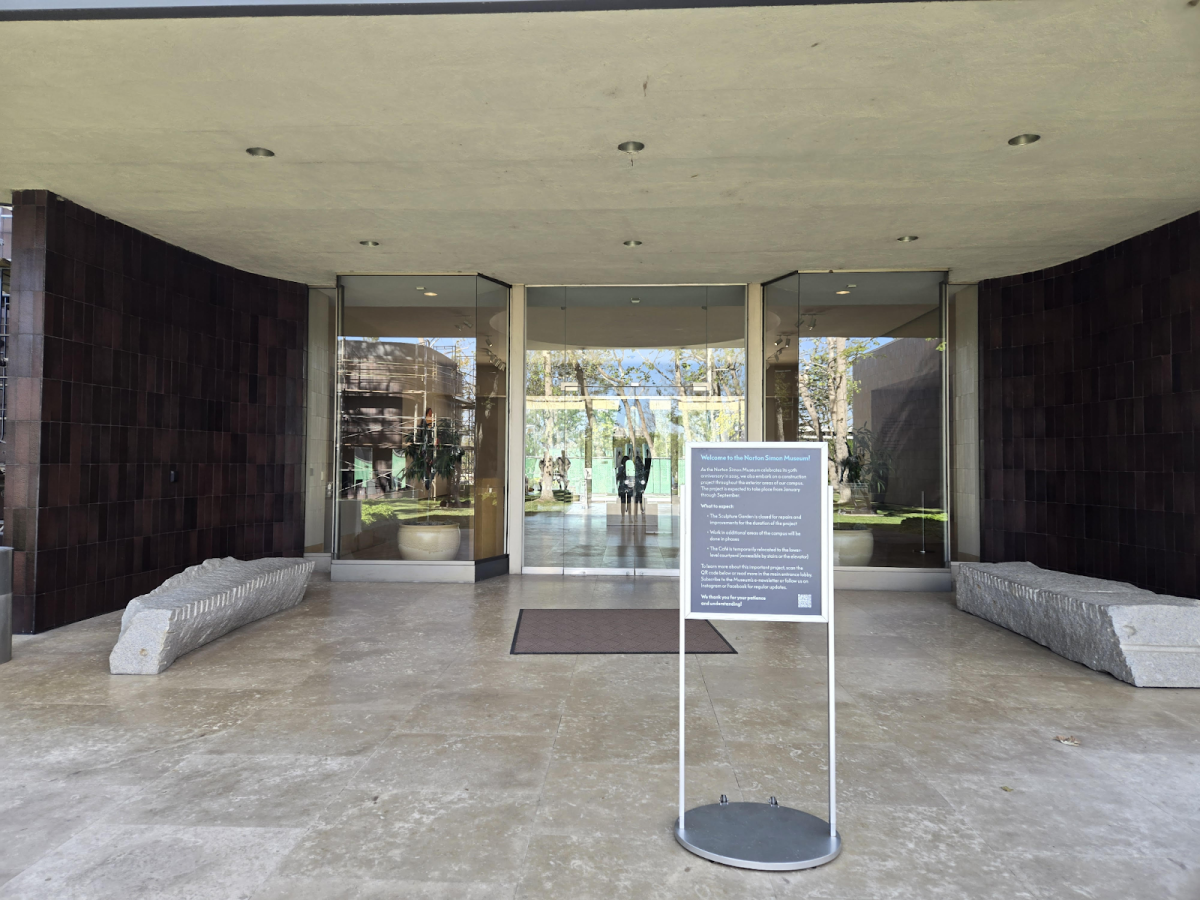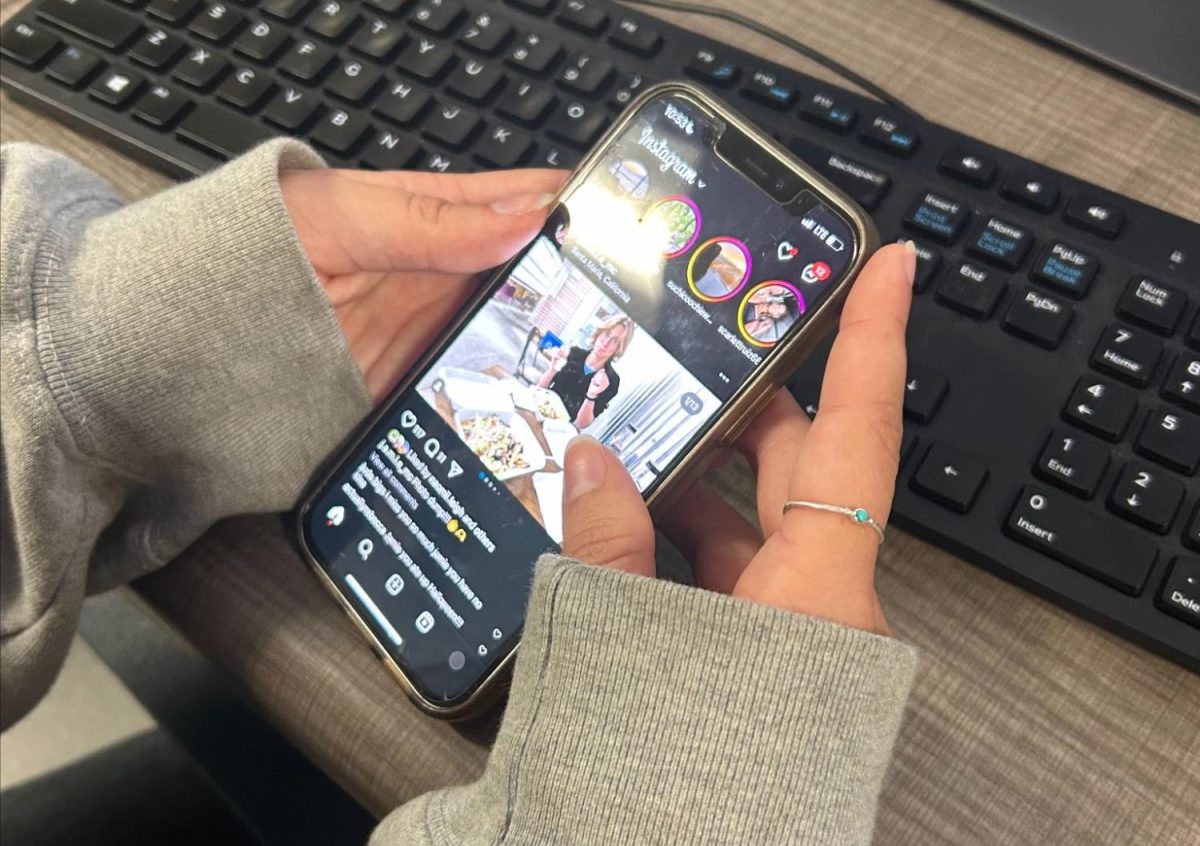One of the many SLOHS students who has been caught doom scrolling during class time. Photo courtesy of freshman Mallory Cushing.
Cell phones have become a common way for students to communicate and interact with the world, including many members of San Luis Obispo High School. Although phones can be helpful and entertaining, many teens tend to spend a lot of time on their phones, which has become a problem with parents.
Many teenagers use various social media platforms, such as Instagram, TikTok, etc. Most would say that they are either addicted to or are spending too much time on these sites.
“I think that between my mom and I, that I’m on my phone more because I’m a teenager. My daily average screen time is a little more than four hours and my most used app is ‘Block Blast,’” said freshman Sophia Chaves.
The majority of teenagers argue that phones are more beneficial than harmful. Thirty percent of kids, ages thirteen to seventeen, claim that their phone causes them more harm than good.
Most teenagers find that they are happier if they limit their phone use and can often be calmer and more productive.
“I go on social media a lot, probably too much honestly,” said junior Brandon Espinosa.
Around four in ten teens would say they spend too much time on their phones, and nearly one in three would say they spend too much time on social media.
Lately, many parents have been monitoring or controlling their children’s time on the phone. This reflects a wider issue of parents becoming more concerned about their children’s social lives.
“I think my daughter is on her more often than I am. My daily average screen time is around seven hours and my most used app is messages,” said SLOHS parent Tonia Chaves.
On average, parents spend upwards of seven hours per day on their smartphones, which is 1.2 hours more than that of children. Many parents may be left feeling guilty about their screen time compared to the amount of time they spend with their kids. 93 percent of parents and kids admit that they are guilty about how the time they spend scrolling versus interacting with one another.
Whether students or their parents use their phone as an escape, or barely check in on their socials, phones have become a part of our daily lives.
Sources: pewresearch.org, commonsensemedia.org, adventisthealth.org, timesofindia.com

































